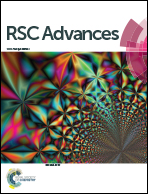Mechanical and metallic properties of tantalum nitrides from first-principles calculations
Abstract
The phase stability, mechanical properties and metallic properties of tantalum nitrides are extensively studied by means of first principles calculations. The relationship between nitrogen concentration and physical properties of tantalum nitrides has been systematically investigated. With the nitrogen concentration increasing, it is found that the feature of covalent bonding enhances and the directionality of the covalent bonding and hardness of tantalum nitrides reduce. While these make the ductility of tantalum nitrides improve with the nitrogen concentration increasing. The intensity of metallic properties of tantalum nitrides can be effectively adjusted by controlling the nitrogen concentration and pressure. When the tantalum: nitrogen ratio reaches Ta : N = 1 : 3, remarkable nitrogen–nitrogen bonds are found in TaN3. The hardness of TaN3 abnormally increases with reference to that of the preceding composition Ta3N5-II. The potential synthesis routes of tantalum nitrides are suggested.


 Please wait while we load your content...
Please wait while we load your content...